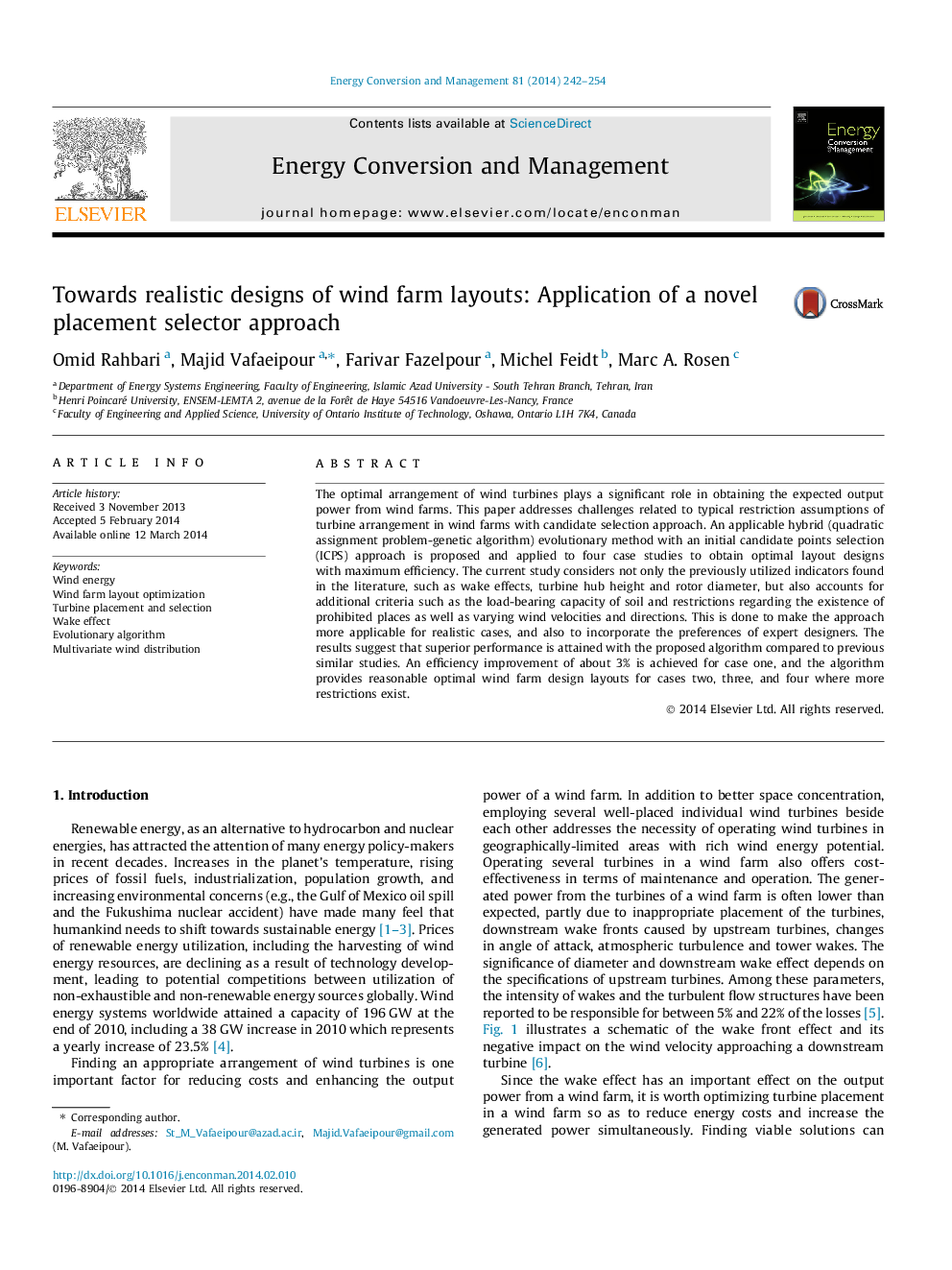| کد مقاله | کد نشریه | سال انتشار | مقاله انگلیسی | نسخه تمام متن |
|---|---|---|---|---|
| 763962 | 1462881 | 2014 | 13 صفحه PDF | دانلود رایگان |
• Challenges of turbine arrangement in wind farms are addressed.
• Turbine properties and land restrictions are considered in optimization process.
• The proposed approach can incorporate designer’s preferences into the optimal design.
• Superior performance is attained compared to previous similar studies.
• The proposed algorithm provided optimal wind farm layouts for four case studies.
The optimal arrangement of wind turbines plays a significant role in obtaining the expected output power from wind farms. This paper addresses challenges related to typical restriction assumptions of turbine arrangement in wind farms with candidate selection approach. An applicable hybrid (quadratic assignment problem-genetic algorithm) evolutionary method with an initial candidate points selection (ICPS) approach is proposed and applied to four case studies to obtain optimal layout designs with maximum efficiency. The current study considers not only the previously utilized indicators found in the literature, such as wake effects, turbine hub height and rotor diameter, but also accounts for additional criteria such as the load-bearing capacity of soil and restrictions regarding the existence of prohibited places as well as varying wind velocities and directions. This is done to make the approach more applicable for realistic cases, and also to incorporate the preferences of expert designers. The results suggest that superior performance is attained with the proposed algorithm compared to previous similar studies. An efficiency improvement of about 3% is achieved for case one, and the algorithm provides reasonable optimal wind farm design layouts for cases two, three, and four where more restrictions exist.
Figure optionsDownload as PowerPoint slide
Journal: Energy Conversion and Management - Volume 81, May 2014, Pages 242–254
